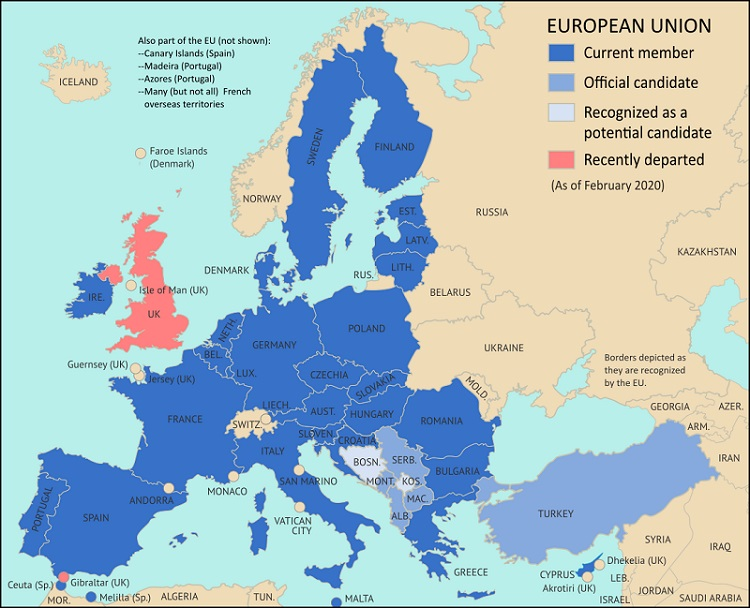International Relations
Renegotiation of BTIA: India-EU
- 29 Oct 2021
- 5 min read
Why in News
Recently, government officials have revealed that India and the European Union (EU) are set to resume negotiations for a Bilateral Trade and Investment Agreement (BTIA). The BTIA talks have been suspended since 2013.
- However, at India-EU Leaders’ Meeting earlier this year, both countries agreed to relaunch free trade negotiations for the BTIA and also adopted a Connectivity Partnership.
Key Points
- About BTIA:
- Background: India and EU had launched talks for having a wide-ranging Free Trade Agreement (FTA), officially called broad-based BTIA, long ago in 2007.
- The BTIA was proposed to encompass trade in goods, services and investments.
- However, the talks stalled in 2013 over differences on market access and movement of professionals.
- Scope: The EU was India’s largest trading partner in goods 2019-20, ahead of China and the US, with total trade close to USD 90 billion.
- With the signing of the BTIA , India and the EU expect to promote bilateral trade by removing barriers to trade in goods and services and investment across all sectors of the economy.
- Challenges: Pursuit of self-reliance has been accelerated by the Covid-19 crisis under the Atmanirbhar Bharat Mission. This is perceived by the European Union as India's “protectionist stance”.
- India may find it difficult to meet the sustainable standards in labour and environment on which the EU now lays greater emphasis.
- Significance: India seeks to signal that it means business and is not averse to signing trade agreements after it opted out of the Regional Comprehensive Economic Partnership (RCEP) at the last moment.
- The EU, in turn, wants to diversify its value chain away from China to India and, hence, there is interest on its part also to have a trade agreement with India.
- Background: India and EU had launched talks for having a wide-ranging Free Trade Agreement (FTA), officially called broad-based BTIA, long ago in 2007.
- Connectivity Roadmap:
- More than Physical Connectivity: It is an ambitious and comprehensive connectivity project, which not only focuses on physical infrastructure but also envisages enhancing digital, energy, transport and people-to-people connectivity.
- Components: India-EU connectivity roadmap covers three main areas — trade and investment, science and technology and Sustainable Development Goals (SDG).
- Regional and Multi Stakeholder Approach: The focus areas were connectivity within the country, building connectivity with Europe and in that process work with other countries in South Asia and Info-Pacific.
- It will catalyse private and public financing for connectivity projects.
- Counterfoil to BRI: The report titled India-EU Connectivity: Partnership for Development, Demand and Democracy’ underlines that the connectivity road map indirectly seeks to counterfoil China’s Belt and Road Initiative (BRI).
- As it stressed on principles like democracy, rule of law, inclusiveness and transparency and avoiding debt trap.
Way Forward
- Geo-Economic Cooperation: India can pursue EU countries to engage in Indo-pacific narrative, geo-economically if not from security prism.
- It can mobilise massive economic resources for sustainable development of regional infrastructure, wield political influence and leverage its significant soft power to shape the Indo-Pacific discourse.
- Finalisation of Indo-EU BTIA Treaty: India and the European Union have been negotiating a free trade deal, but it is pending since 2007.
- Therefore, for closer convergence between India and the EU, both should engage in finalisation of the trade deal as soon as possible.
- Collaborating With Important Players: French President Emmanuel Macron’s visit to India in early 2018 unveiled an expansive framework for revitalising the strategic partnership.
- India’s partnership with France now has a strong regional anchor in the Indo-Pacific narrative.
- India is also engaged in negotiations for a trade pact with the UK.







